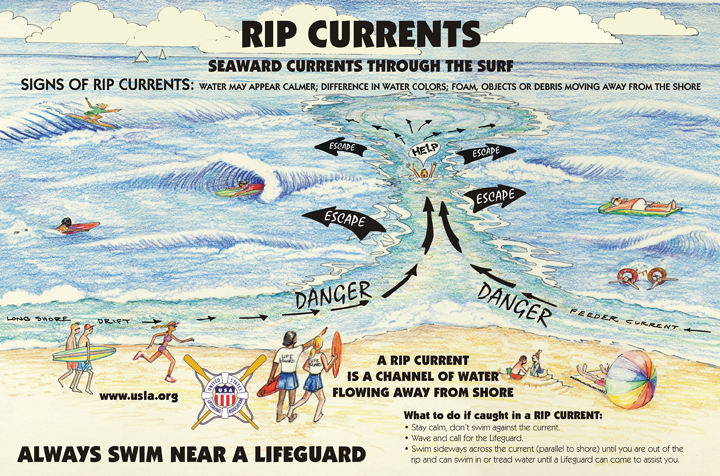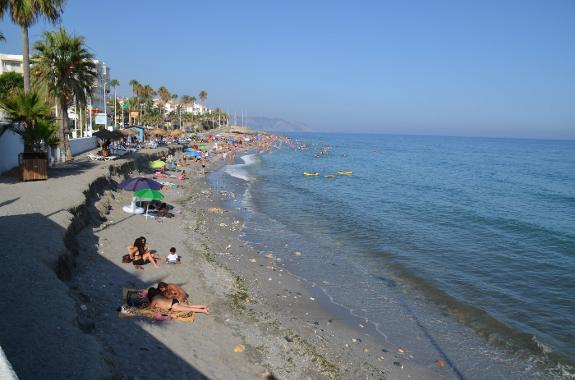Every summer inexperienced swimmers die because they do not know what to do when they find themselves caught up in a riptide.
Also called rip currents or undertow, the phenomenon occurs when a narrow band of water moves directly away from the beach.
Imagine a river running through the waves in the opposite direction, pulling anything trapped in it out to sea.

When swimmers find themselves in a riptide they panic and try to swim to the shore.
While this is a natural reaction, it is the worst thing you can do, as you will quickly tire and drown.
How do you know where rip tides are?
Riptides can form anywhere, but are most commonly found between inlets and sandbars and can appear and vanish in a matter of seconds.
If you see waves crashing on a beach and then a piece of water with no wave action, this is most likely due to a rip current.
So while the water might look nice and calm there are no waves because the water is flowing in the opposite direction.
Another tip to spot a riptide is that the water in it appears darker than the water around it. This is due to sand and sediment being picked up by the current.
What do you do if you find yourself in a riptide?
First of all, don’t panic and avoid the urge to try and swim to the beach, as the pull of a riptide can be as fast as eight feet a second, far too fast to try and swim against.
Instead, swim parallel to the beach until you are out of the rip, usually, this is only a matter of between 10 and 20 feet. Once you are out of the rip, you will know.
If you feel like you may be in danger, don’t be afraid to shout for help immediately and try not to panic. The further out the rip pulls you the weaker it gets. Once you are out of the rip or manage to get to the side of it, try and float or tread water until a lifeguard can reach you.
Always when swimming in the sea or ocean, only swim in areas where a lifeguard is on duty and be sure to obey warnings.
Rip currents can be present under the right conditions around Nerja and Torrox, so look for the warning signs and always swim in designated areas.

